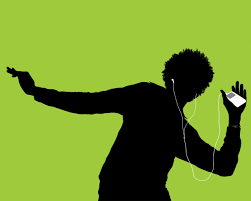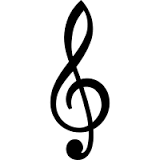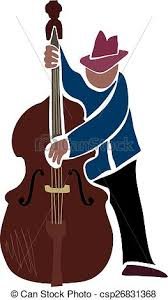Tips to enhance your music listening

Are you tired of always playing the same music and want to widen your playlists and taste?
Want to discover new styles of music, to go deeper in your understanding and emotional engagement in the music you are listening to, in order to get even more out of it?
Are you one of all people who at some point felt a longing to discover more about a certain music-genre (let’s say, for example, the western classical music), but when you listened to it, it all sounded the same, perhaps boring, in some weird way unaccessible? Like you were in a cinema watching a 3D-movie, without those coloured glasses you’re supposed to wear. Or perhaps like you were trying to read a book you knew is meant to be really interesting, but in a language you don’t speak.

If any of this remotely resonates with you, I would like to say, WELCOME to this post!
I am a newly graduated musician violinist from Sweden, playing many different genres all the way from country rock via Mozart and Vivaldi to Scandinavian folk music and free improvisation… And I think that I might be able to suggest some new perspectives on how to look at music (there are sooo many ways!!) - and who knows, maybe you will even start seeing a new little musical universe opening up in form of a new style to appreciate, or deepened enjoyment of an old one.
Regardless whether you are curious about Bach, Zappa or Moldovan traditional doina - here are some tips to enhance your way of interacting with music! (And if you have no idea where to start your search and need concrete tips for your new discovery of musics - watch this space!)
This series of tips are especially relevant for non-commercial styles of music and styles which are not as immediately catching the ear as your average radio pop-song (for example classical music, traditional music from different parts of the world, jazz, experimental/new music etc), but feel free to implement them wherever you so wish! If any of them seem less useful to you, just skip that one and go to the next. I might also develop on some of these individual topics later on, if there is an interest. So, here we go!

Place the music in context
- Which genre is it? If you don’t know, try and think of other things it reminds you of.
- Can you locate anything about the origin of the music - does it sound like it is from a specific part of the world, does it have song lyrics in a certain language?
- Does it sound old or modern? Can you judge whether it is from last month, the 40’s, the nineteenth century or medieval?
Enjoy the rhythm!
We are so used to listening to the melodies in music, though it actually often happens many times that other parameters can be of greater importance to a certain piece (whether it has melody or not). In this context I use the word rhythm to refer to the underlying pulse in a piece, and also any particular rhythmic feature the piece might have.
So take a moment and try to feel the bigger, underlying pulsation of a piece. You can for example clap your hands to it (try it out different ways if you are unsure where to find the pulse). Is it a slow pulsation or a fast? Perhaps the piece is rather fast, but the pulsation is slower? After that, try to think if there are other complementary rhythmic features to it. These can be small rhythms and patterns that come back throughout the piece.

Bonus info: most western classical music before 1750, as well as traditional music from Europe, the Middle East, Africa and probably more places too, is largely built upon dances. This means that rhythm plays a huge role!
Name the character(s) in the music
- What emotion do you read into the piece?
- Does it have lyrics? Listen to them! How do the instruments (if there are any) enhance the meaning of the words?
Identify what elements the music is made of
- Is there singing? Only one voice, or more?
- Are there any instruments? Which ones?
- Is there a distinct melody? (Does not need to be sung! A melody can also be played by an instrument.)
- Is there a pulse/beat? Note that some music doesn’t have that, like for example non-rhythmic free improvisation, gregorian chant (medieval monks singing), and even that kind of 40’s Disney film music like in Tom & Jerry:
(
If you want to take it one step further:
Is there a chord/harmonic structure in the music? For example in pop, jazz, and classical music, this is very common. But in for example West African drums music, some of the singing of the Sami people (Northern Scandinavia/Russia) and other traditional singing, there is not really any chords at all. In other music there might be elements of chordal structures but they are not as prominent, like for example in indian classical music (which is largely built on other parameters).
When you think of these things, you move focus from what is immediately accessible to what is not. Thus, you can hear the whole in a new way, which also might provide more depth once you return to listening to the most prominent part of the piece again (e.g. the singing melody).
Pay attention to the bass line
If there is a bass line in a piece, it usually provides many cues how to interpret it’s meanings. The bass plays a vital role in the presentation of any music, and dictates most of what the others in the group are playing/singing. So it can be really interesting to focus on this many times most forgotten function in a band/ensemble/orchestra!
Try and listen to the lower sounds in a piece. Can you hear the bass? It might be an electric bass in a pop song, a bunch of cellos and double basses in a symphony orchestra, or a double bass in a big band. In some classical music it could also be a bassoon, a tuba, an organ or something else, and in contemporary folk/world/ethno music usually either electric bass, double bass, cello, or even guitar or accordeon.
When you identify it, try and follow its line in the music. You will hear the piece in a completely new way!

It is also helpful to listen to the bass line if you want to identify the chords, which in itself can be a bit difficult. If you sing the bass line in your head, you can a lot of the times make out the rest of the chords from that (that is, if you have some elementary knowledge in music theory and harmony).
Find the underlying structure in the music
This one is a bit more complex, perhaps I will write a separate post on it. The variables also differ quite a lot depending on the genre of the music. Some things to note are however:
- How does the piece begin?
- What is the next development in the ‘build-up’?
- Are there additions and/or subtractions in instrumentation (i.e. are more people joining in or dropping out at some point)?
- What contrasts are being worked with and at which points?
- Are there any major changes of character in the piece?
- When do themes return throughout the piece? Does pulse stay the same throughout?
- How does the piece end?
Lastly, one thing not to underestimate...
is the power of getting used to something! This means, that if you in the beginning find a certain type of music hard to appreciate, it will most likely change and get better if you give it enough of a chance - that is, listen to it many times over and over! The problem, of course, is that this might seem pointless if you are in a non-appreciative feeling towards the music in question. I encourage you to pick a style or a piece or a composer or something else, then listen to it regularly and you will find that eventually you start hearing more details, that more of the feeling of the music is coming through to you. In this way too, you can teach yourself to appreciate new music that seemed dull at a first listen.

Well guys, I hope this was useful to someone!
Hope to see you around my corner of Steemit for more stuff in general and particular, exploring the very wonderful subject of music!